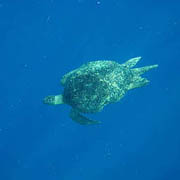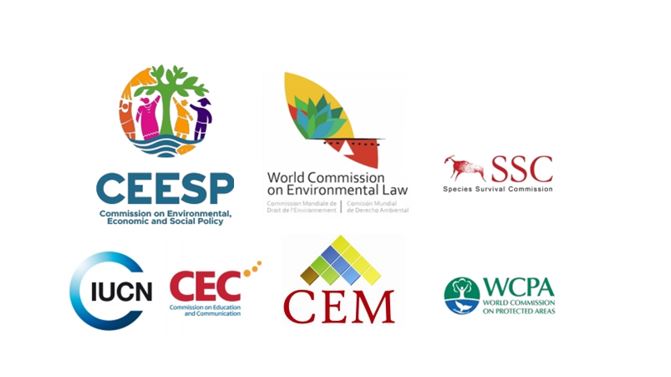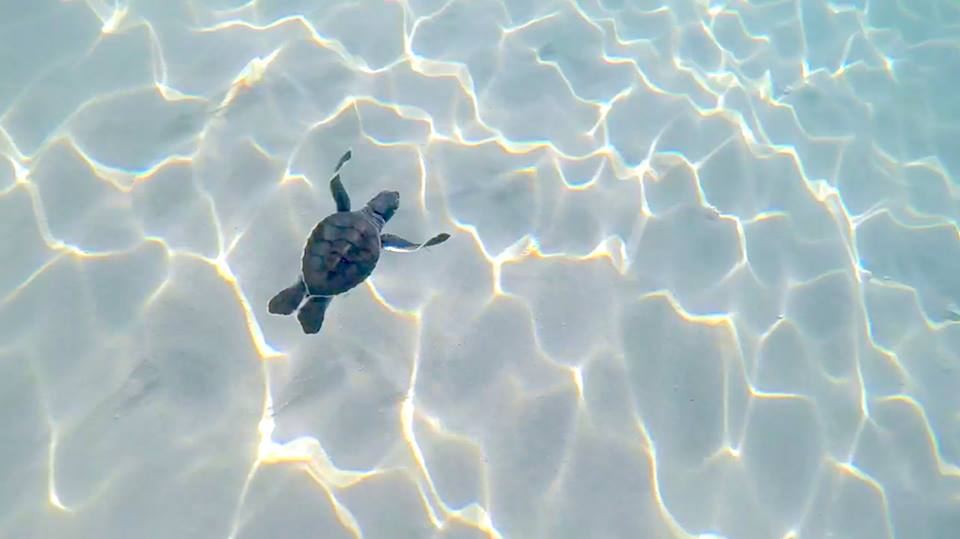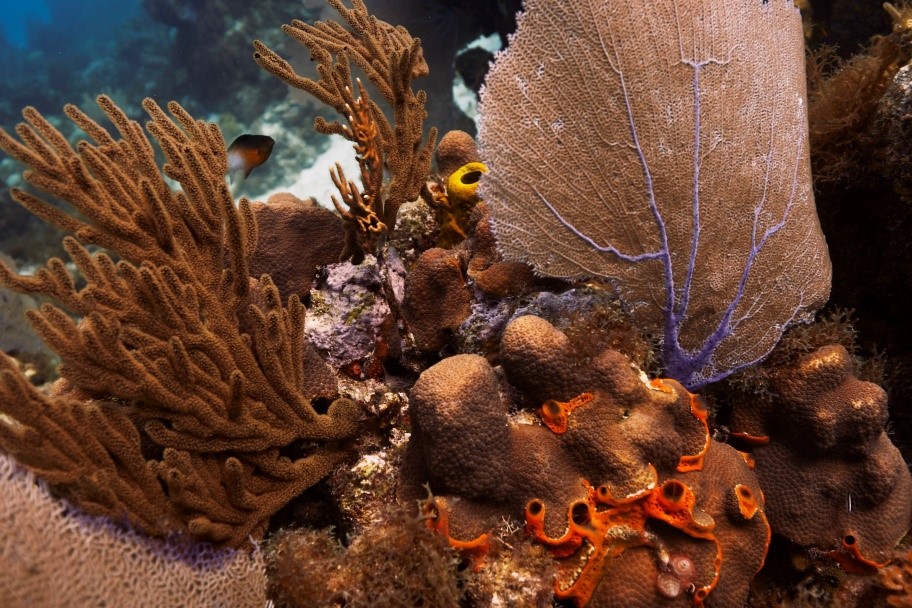Watching over the universal worth of Tubbataha Reefs’ paradise of blue
What does marine paradise look like? Imagine pristine coral reef, turquoise blue lagoons, whales, dolphins, turtles and seabirds. Such a paradise exists on Earth, in Tubbataha Reefs National Park in the Philippines.

Photo: IUCN © Josephine Langley October 2008
Lying in a unique position in the centre of the Sulu Sea, the marine park protects an area over 130,000 hectares of high quality marine habitats containing three atolls and a large area of deep sea. It was inscribed on the World Heritage List in 1993 and was later extended in 2009. The site is assessed as having a good conservation outlook with some concerns in the IUCN World Heritage Outlook, the first global assessment of natural World Heritage launched in 2014.
World Heritage sites have ‘Outstanding Universal Value’, which means they are important to all of humanity across generations. Working to protect a place which is recognised as one of Earth’s most precious assets comes with great responsibility. Angelique Songco, site manager of Tubbataha Reefs National Park, tells us what this means to her.
“Here we’re not just protecting this site for the Palawan province or the Philippines, we’re protecting it for the international community and I find it exciting! It’s an honour to be able to contribute to global conservation goals. In our small little way in some corner of the Sulu Sea we’re able to do something meaningful to a wider community.”
Tubbataha Reefs National Park is a unique example of an atoll reef with a very high density of marine species. The site is an excellent example of a pristine coral reef with a spectacular 100-metre perpendicular wall, extensive lagoons and two coral islands.
It is home to a great diversity of marine life, such as whales, dolphins, sharks, turtles and Napoleon wrasse. The reef ecosystems support 360 species of corals – almost 90% of all coral species in the Philippines – and an estimated 600 species of fish. The reserve also protects one of the few remaining colonies of breeding seabirds in the region.
The site is located in a remote area without human habitation, but is a popular tourist destination, especially for diving. In order to ensure the park’s exceptional values are maintained, tourism requires careful planning and management.
“One year, our management board decided to increase visitation fees by 100%. I wasn’t sure how visitors would react, but because the park is well kept, this was well accepted by as they could see where the money was going. Perceptions are very important, and most people realise it is very costly to manage a site like this one,” says Angelique Songco.
The IUCN World Heritage Outlook assesses the site’s protection and management as highly effective. Monitoring is done annually by the park staff and external researchers, and one volunteer scientific group examines the site every four years. The park management advertises the site as an educational destination to various stakeholders, from fishermen to tourists.
However, some threats do exist. Fishing is not allowed inside the park and rarely occurs, but vigilance is needed. Angelique acknowledges that: “as coral cover and fish stocks are declining all over the world, the site is like a crown jewel – there is no fish elsewhere and fishermen would like to be able to get their hands on a fishing area like this. This means enforcement is becoming more and more important. I think we’ve achieved a degree of success in enforcing the law and making sure that there are hardly any illegal activities in the park.”
As with many marine protected areas, the biggest potential threat facing Tubbataha National Park is climate change, which could have drastic consequences due to ocean acidification and coral bleaching. In addition there is growing concern over the increase of debris in the sea.
“Marine debris is an emerging challenge,” says Songco. “We’ve seen a lot of deaths of our seabirds and this is increasing. In the last few years, while on snorkelling trips, I’ve seen plastic trapped in corals, which I had never seen before, and I’ve been managing the park for 14 years! But now, there never is a snorkelling trip with the rangers when there is no garbage in sight.”
For now, the conservation outlook for Tubbataha Reefs Natural Park remains good, as most threats are being addressed and mitigated by the protective management approach in place. Its efficiency has resulted in improved conditions of the park’s unique coral reef ecosystems. Potential future threats raise some concerns because of their unknown nature, with the possibility of impact from climate change looming on the horizon.



